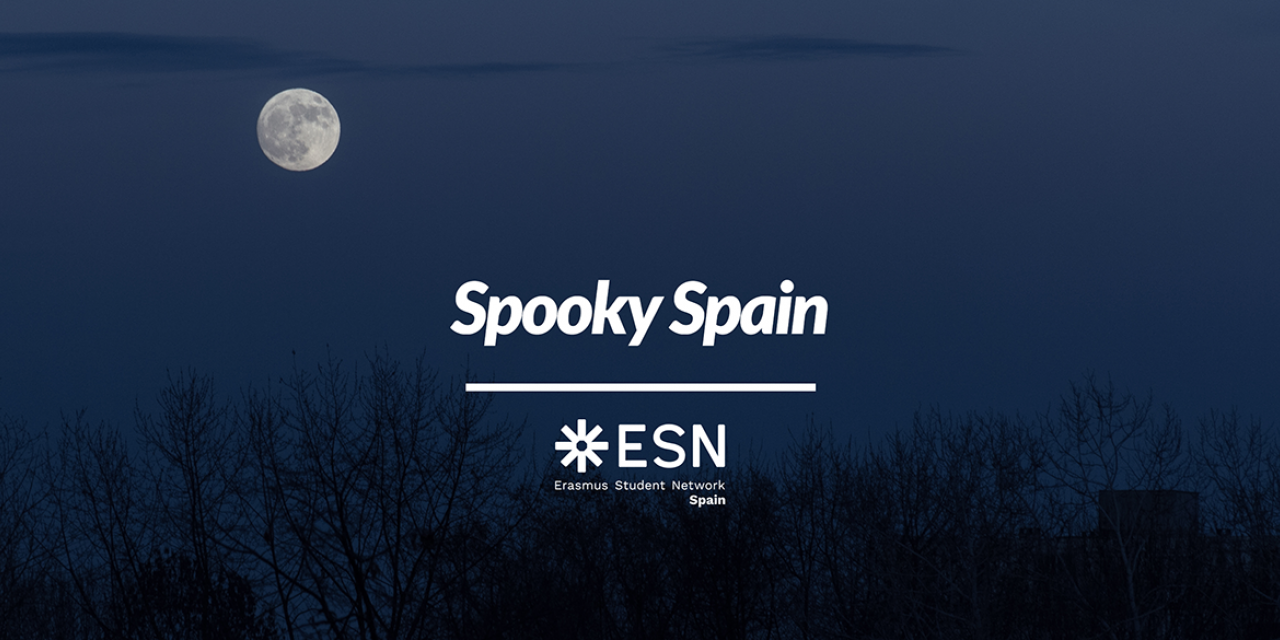
Welcome to the month of terror!
In this blog we will show you some of the spookiest traditions that you can find throughout the Spanish territory.
Ready to find traditions that will scare you?
Would you dare to travel to any of these places?
La Vijanera in Silió, Cantabria

La Vijanera is a winter masquerade that takes place in Silió, Cantabria, on the first Sunday of each year, considered of National Tourist Interest.
It consists of a colorful masquerade in which around 75 different characters incarnated by more than 160 neighbors (all men) participate.
La Vijanera is made up of a multitude of layers, finding more archaic costumes that coexist with others such as the professions that date from the beginning of the 20th century. The true protagonists of the festival are the “zarramacos” due to the importance of their role.
The latter are people dressed in sheepskins and pointed hats as well as wearing black painted faces that drive away the evil spirits of the year that begins by ringing the various bells that are tied to their bodies.
Dancing without stopping and producing a thunderous noise, their mission is to expel said spirits from the town reaching the limits of it. Animal figures are mainly the element of local pre-Roman tradition.
This festival represents the desire to banish the past year and prepare the way for the new year so that it begins with hope and good omens.

La Fiesta de Santa Marta de Ribarteme en As Neves, Pontevedra

Each 29th July, Santa Marta’s Romeria takes place in Galicia. More precisely, As Neves (Pontevedra) is the exact location in which this well-known festivity is developed.
Ancient documents, which still remain in our times, indicate that Marta was a very close person to God, since she & her family sheltered the Messiah as he passed through Betania. She even became one of the so-called “Saint Women”, and was by Jesus' side on his way to his crucifixion.
Moreover, Marta's prayer for the intervention of Jesus to bring back to life her brother Lazarus was realized, and his brother resuscitated. Trusting in the protection of Santa Marta, pilgrims come to the Sanctuary to plead for over the critical moments of their life.
So this long-lasting tradition has survived along the centuries and several setbacks. During the Spanish Civil War, the church in which this event is held each year, burnt down. However, devotees from all places contributed and helped to improvise a little altar so the festivity could be carried out.
Such compromise and engagement has continued even to nowadays, favouring the declaration of this Romeria as a “Tourist Interest” event, an important recognition at National level.
But, what is it really about? Masses for the “Romeros” (pilgrims) are held from early morning. They make the offer on themselves or on some relative who one day, in a critical moment of his life, forced himself to go on a pilgrimage to Santa Marta to ask for or thank for his favors. The Saint procession is made by walking or kneeling around the sanctuary, and then attending the Holy Mass. Furthermore, “romeros” leave at the temple’s doors the coffins that symbolize death.
Or even more dramatically, these pilgrims may be placed inside the coffins.

La "Dansa de la mort" - La Danza de la Muerte en Verges, Girona

The Verges Procession, in Girona, is one of the most original and oldest of the Easter celebrations. It rescues an old medieval tradition present throughout Europe, the dances of death. These macabre dances were representations that meant the equality of all beings before the final Judgement.
It is one of the most important examples of traditional Catalan theater that is maintained every Holy Thursday thanks to the staging of the procession before thousands of citizens and visitors who come to enjoy it.
Among the protagonists there are gloomy skeletons that jump in their particular circular dance and other members dressed in black tunics that advance with them. The sound of the drums marks the rhythm, and the presence of the scythes, the ashes and the clocks remind us that we all have to reach the final hour.
This Traditional Festival, declared of National Interest, takes place first in the town square; then, in the real scenario of the medieval walls and, finally, in the fortification towers.

Festa do Samain - Fiesta de Samaín (Cedeira), Coruña

Cedeira, a municipality in A Coruña located at the Condomiñas River in the Rías Altas, celebrates an original Celtic festival every year called Samaín. Several experts agree in pointing out Samaín as the origin of most of the traditions associated with the dead.
This festival represented two great purposes; the beginning of the harvest season and the new Celtic year. So, it has become a very attractive tradition for travellers from all over the world to visit Galician lands and to celebrate the "noite meiga" (which translates as the “Witches Night”).
Nevertheless, you are surely more familiar with the American version of this pagan festivity…
Have you heard about Halloween? Exactly!
Many towns in the Galician region have unforgettable and fun experiences during the night of October 31st on its own way.
Typically, the Samain was a day where the living and the dead lived together. According to this legend, on the eve of November 1st people could gather the spirits of their friends or family and share again on earth.
However, both good and bad spirits could be brought back. Hence, in order to avoid the bad ones getting bothered with the Celts, living people leave these spirits food.Obviously, as time went by, the tradition of leaving food evolved and today we see children asking for sweets and candies during the night..
Can you spot any difference with Halloween? There are not!

Fiesta de los Exconxuraos - Fiesta de los Conjurados (Asturias)

The "Exconxuraos" of Llanera are the commemoration of a historical event that took place in the Council a long time ago and whose commemoration was taken up again by the residents of this central Asturian municipality a little more than a decade ago.
Towards the year 1408, without being able to fix the exact date, the neighbors of the Council of Llanera were tired of supporting the "offenses and unreasonable" that received "of some commenderos of Don Guillén". So they declared an open rebellion against their authority.
As a consequence, the serious canonical penalties typical of these cases are imposed on them, pronouncing sentences of excommunication on the inhabitants of the rebel council and its entire territory.
Later on, The Council designates Juan Fernandez, representing the willingness of Llanera’s people, to manifest the promise of not to rebel again in the future. Unexpectedly, Mr. Diego's provisor and vicar general and the procurators of the Dean and Cabildo show a generous conciliatory attitude towards the rebels, ending this way the altercations.
So, in order to remember those past times, the festival (held on the first weekend of July) serves as a union and fraternization between all the neighbors as in their day did their ancestors.


